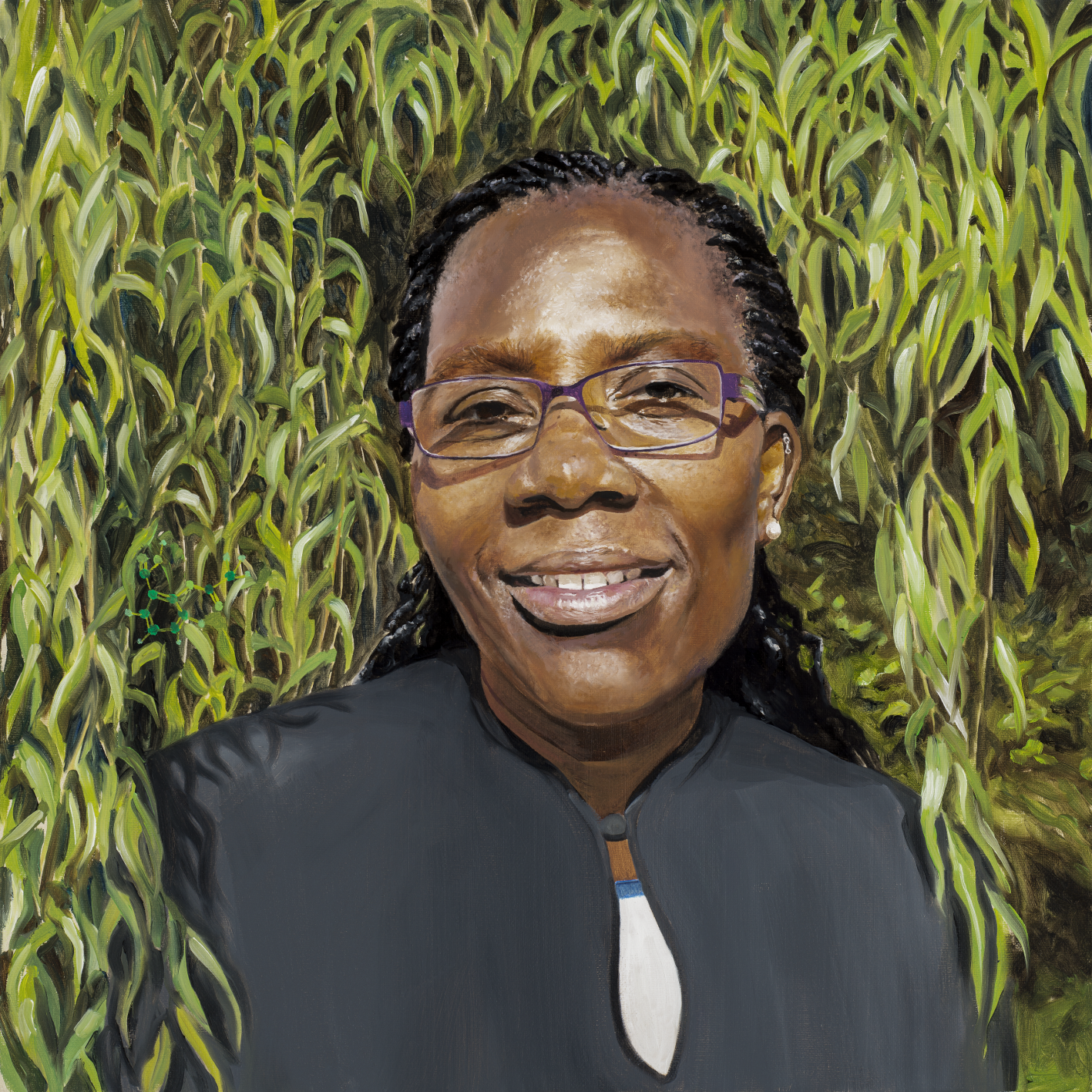
Sarian, Willow and Aspirin
This painting celebrates one of the oldest medicines known to man. Extracts from willow bark have been known to help alleviate headaches, pains and fevers since antiquity. Willow was used as a medicine by ancient civilisations like the Sumerians and Egyptians. The Ebers papyrus, an ancient Eqyptian medical text, refers to willow as an anti-inflammatory or pain reliever, as does Hippocrates. The treatment was developed into a stable pharmaceutical drug at the turn of the twentieth century and became known as 'aspirin'.
Today, aspirin is often taken in low doses to help prevent strokes and heart attacks. Sarian uses aspirin as a pain killer. She is pictured with a curtain of weeping willow foliage in a nearby park.
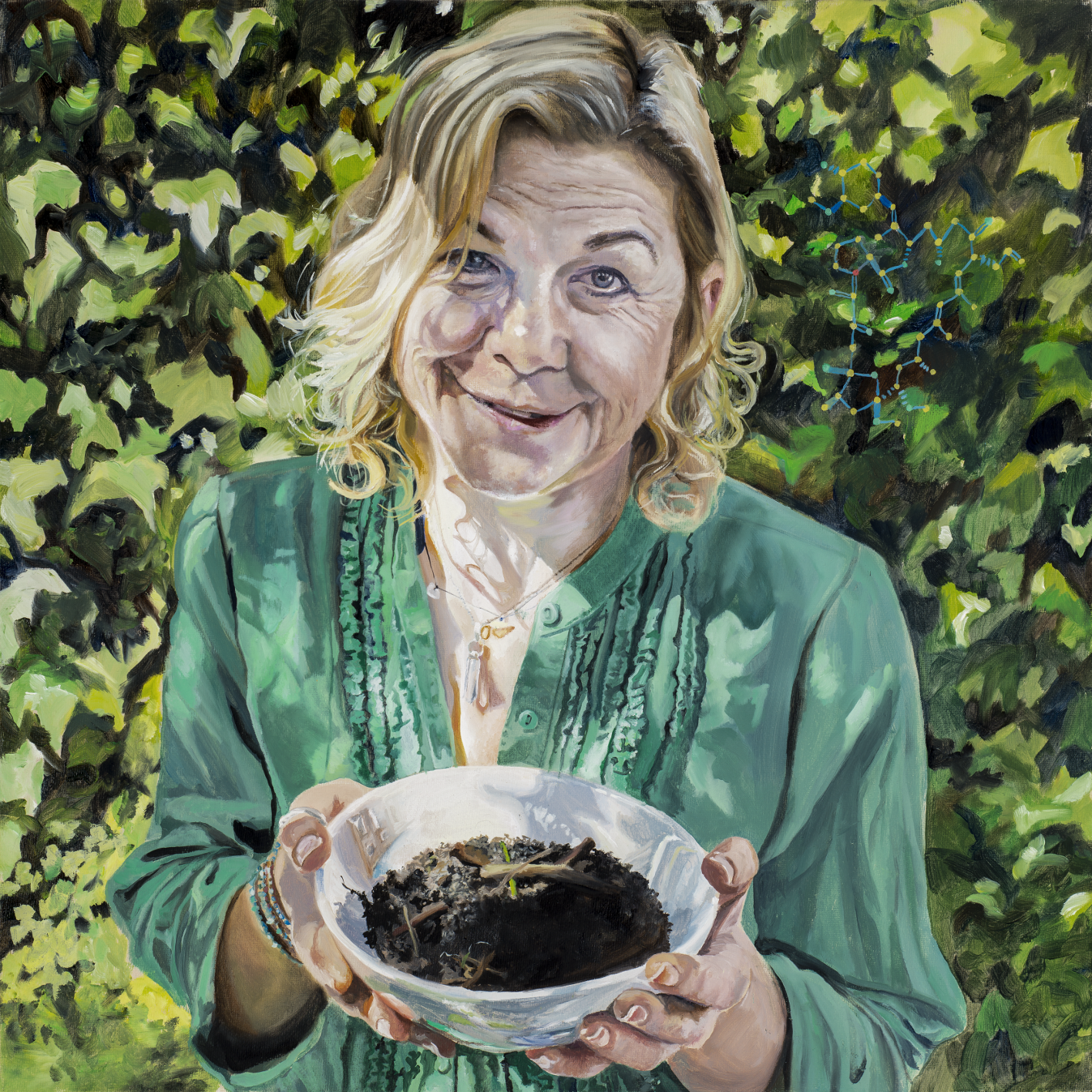
Sarah, Soil and Tacrolimus
Sarah is pictured holding a bowl of soil. In the 1980s in Japan, a bacterium was discovered in a sample of soil. It was called Streptomyces Tsukubaensis. It was found to have immunosuppressant properties, and was developed into the drug Tacrolimus.
As a teenager, Sarah was diagnosed as having type 1 diabetes, which eventually led to her having a pancreatic transplant. Tacrolimus helps prevent Sarah's body rejecting her new organ.
During her transplant and recovery, Sarah used art to help her cope with the anxiety and stress. She created painting about her experience and even crocheted a woollen pancreas to help her focus on her healing.
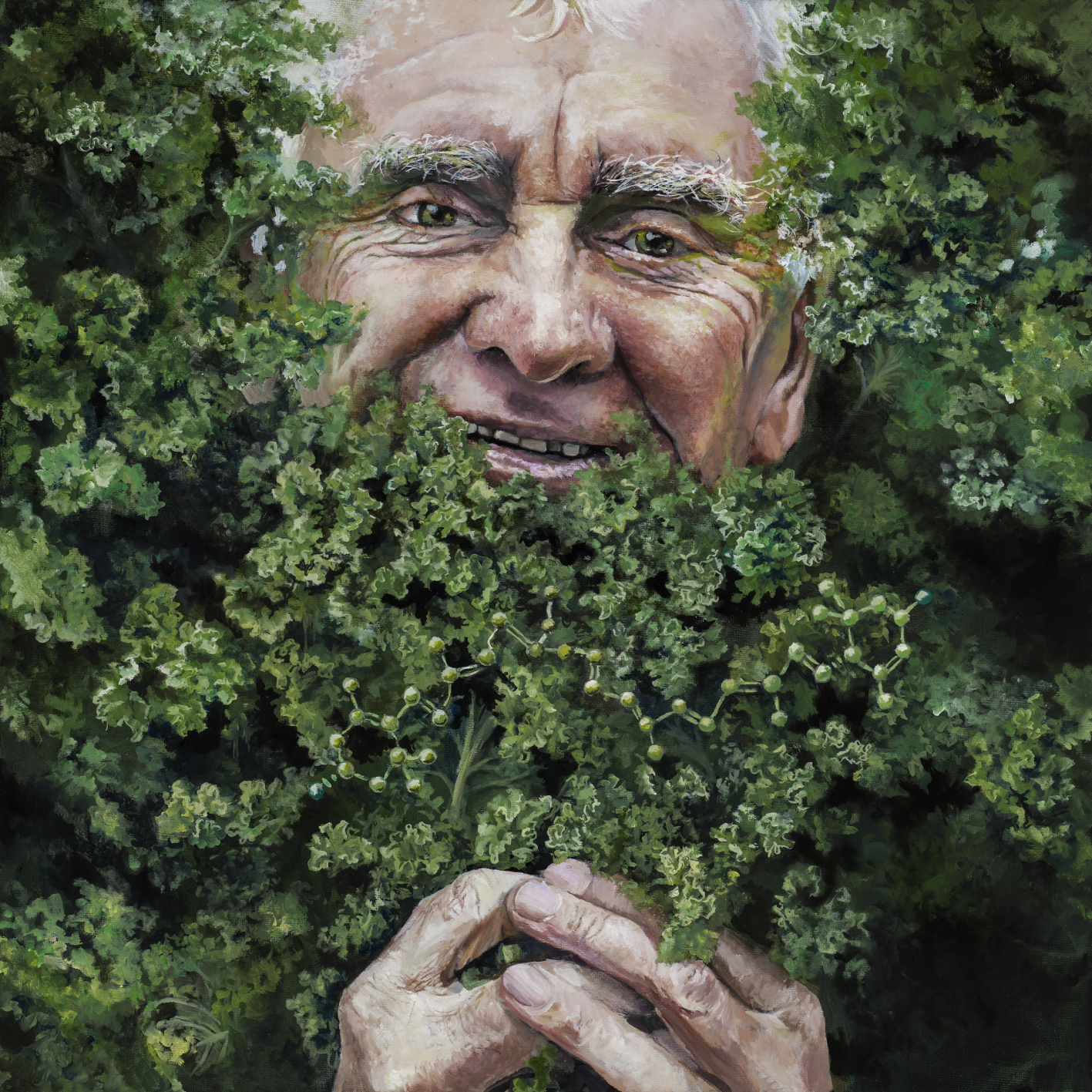
John, Kale and Lutein
John has Age-Related Macular Degeneration which affects his vision. He is painted here with curly kale. Kale is a green leafy vegetable with one of the highest concentrations of the carotenoid nutrients lutein and zeaxanthin, which research suggests are beneficial to eye health and together with other nutrients may play a part in delaying the progression of AMD. You can see the atomic structure of lutein hiding among the kale leaves.
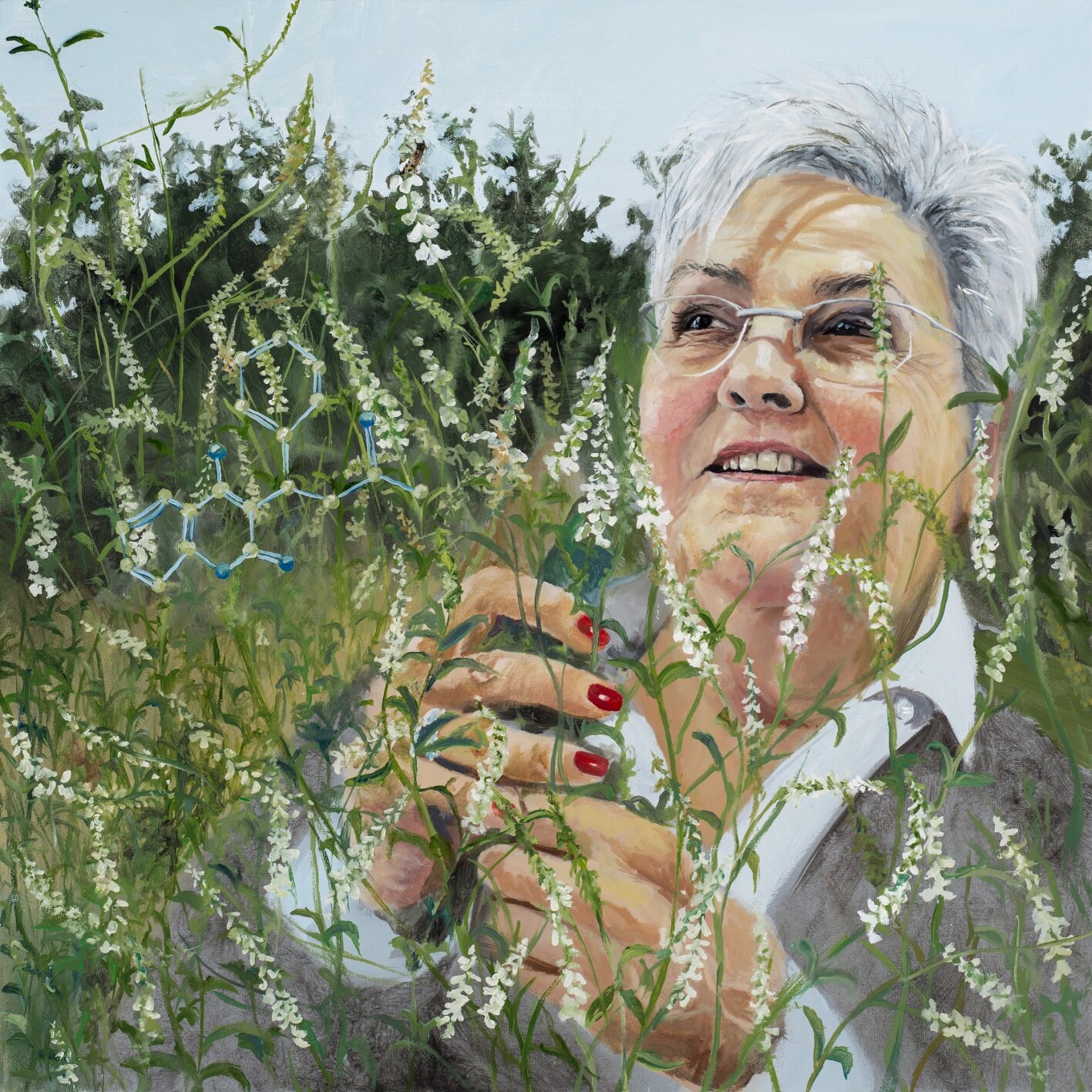
Ingrid, Sweet Clover and Warfarin
Ingrid has a common heart condition called atrial fibrillation, a heart rhythm disturbance. Her treatment prevents blood clotting ans is called Warfarin.
The history of Warfarin is fascinating. In the 1920s in the USA, a herd of cattle suddenly started to haemorrhage after minor procedures like horn removal. The problem was eventually traced back to the feed that they were given, a silage containing large amounts of a wild flower called sweet clover. When the sweet clover rotted down and reacted with fungi, it spontaneously created a natural anticoagulant. In the 1940s this chemical compound was isolated and synthesised and was eventually patented as Warfarin.
Interestingly, in America, sweet clover is known as honey clover because of it's sweet smell which is craeted by the same compound that acts as the medicine's precursor and also gives us the beautiful aroma of freshly cut grass. Sweet clover isn't a British native wild flower but became naturalised in the 1800s, particularly along routes used where grain was imported, including along the Manchester Ship Canal where it can still be found today.

James, Rutile and Titanium
James is pictured with a background of rutile. Rutile is the main ore from which titanium is derived. Titanium is a remarkable metal with many unusual qualities that serve to make it particularly useful in the modern world. It is used for many medical applications because of its high bio-compatibility: it is non-toxic and is not readily rejected by the body. Titanium has the highest strength-to-density ratio of any metallic element and is not magnetic so it's use is not problematic when MRI scans are required.
In James' case it is used as the cover for his pacemaker. Modern pacemakers use cutting-edge technologies to monitor the heart along with their usual job of regulating the heart beat. They can transmit a signal that can be read by a receiver in the patient's home and be sent via the internet to hospital staff for monitoring.
Titanium is also useful because as titanium dioxide it makes a very stable white pigment. It is known as Titanium White and was used for the highlights in this painting.
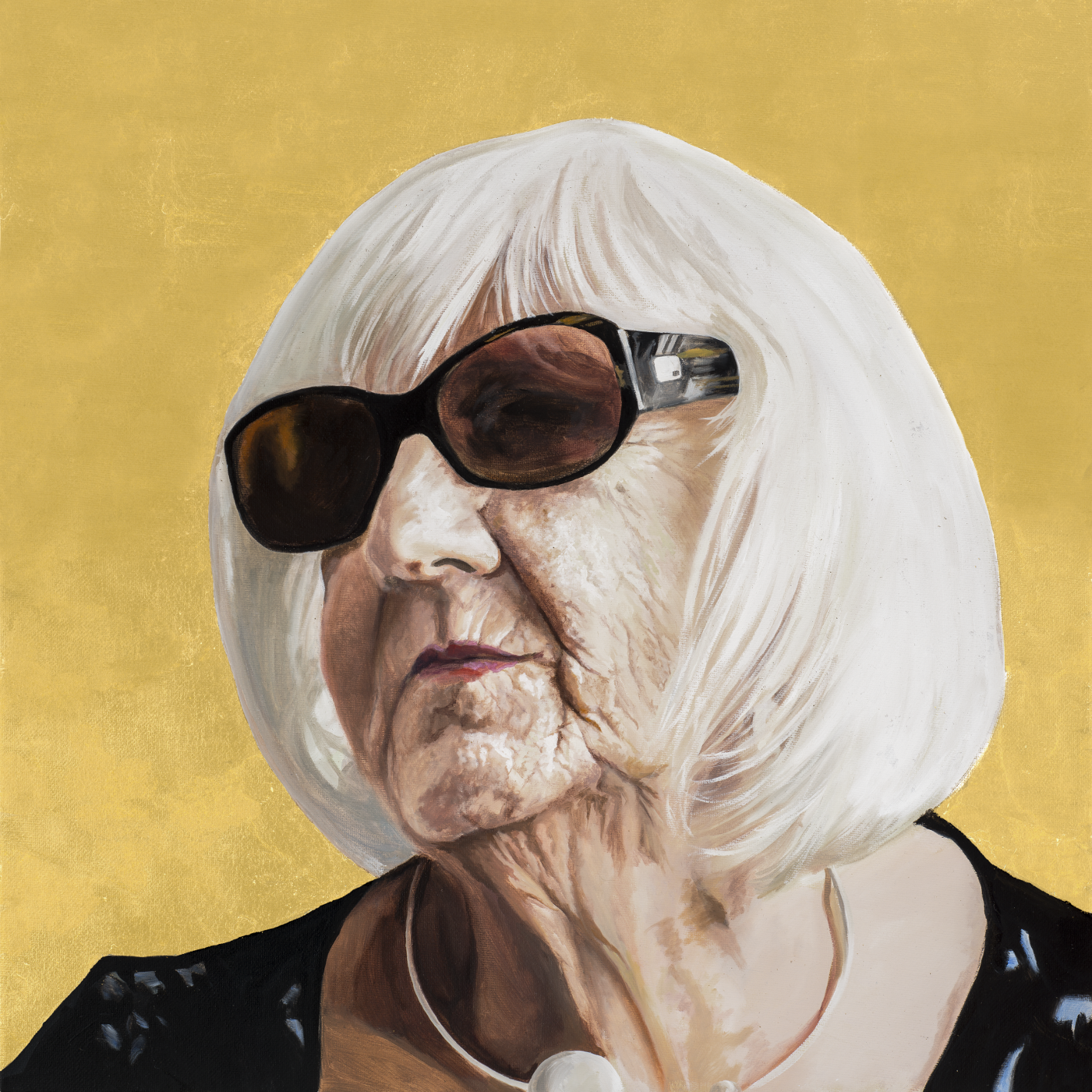
Sylvia and Gold
Lucy was amazed when Rheumatology staff said, "Do you know that we inject people with gold here?"! Gold is a treatment for rheumatoid arthritis which has been used since the 1930s. It dampens down the immune system that becomes over-active with this condition and can cause joint damage.
Sylvia has suffered with rheumatoid arthritis since her forties but despite this and problems with her vision, she is a keen believer in the benefits of crafting to one's well-being. She is a treasure!
